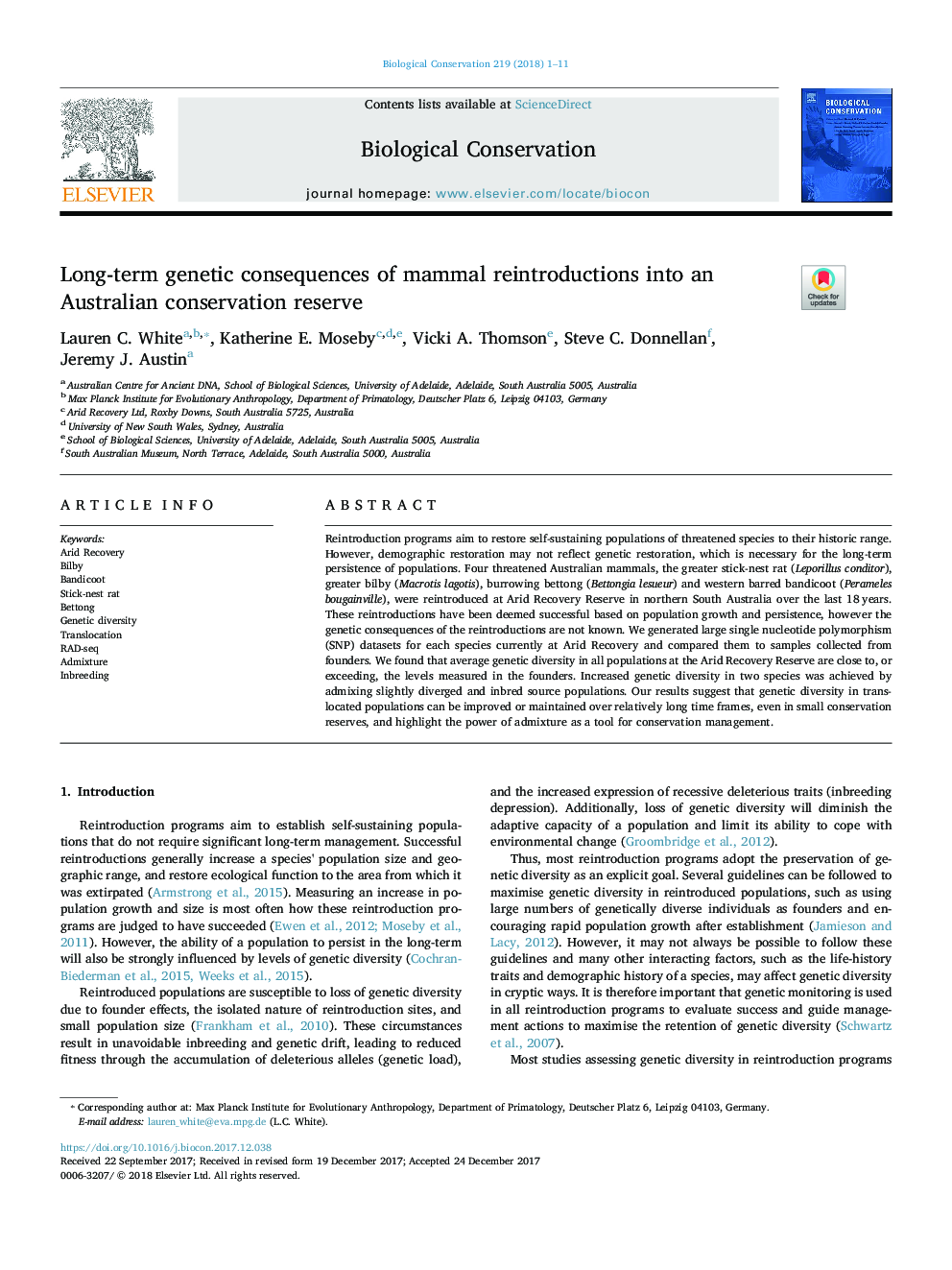| کد مقاله | کد نشریه | سال انتشار | مقاله انگلیسی | نسخه تمام متن |
|---|---|---|---|---|
| 8847426 | 1617886 | 2018 | 11 صفحه PDF | دانلود رایگان |
عنوان انگلیسی مقاله ISI
Long-term genetic consequences of mammal reintroductions into an Australian conservation reserve
ترجمه فارسی عنوان
عواقب ژنتیکی طولانی مدت بازسازی پستانداران به یک ذخایر حفاظت از استرالیا
دانلود مقاله + سفارش ترجمه
دانلود مقاله ISI انگلیسی
رایگان برای ایرانیان
کلمات کلیدی
موضوعات مرتبط
علوم زیستی و بیوفناوری
علوم کشاورزی و بیولوژیک
بوم شناسی، تکامل، رفتار و سامانه شناسی
چکیده انگلیسی
Reintroduction programs aim to restore self-sustaining populations of threatened species to their historic range. However, demographic restoration may not reflect genetic restoration, which is necessary for the long-term persistence of populations. Four threatened Australian mammals, the greater stick-nest rat (Leporillus conditor), greater bilby (Macrotis lagotis), burrowing bettong (Bettongia lesueur) and western barred bandicoot (Perameles bougainville), were reintroduced at Arid Recovery Reserve in northern South Australia over the last 18Â years. These reintroductions have been deemed successful based on population growth and persistence, however the genetic consequences of the reintroductions are not known. We generated large single nucleotide polymorphism (SNP) datasets for each species currently at Arid Recovery and compared them to samples collected from founders. We found that average genetic diversity in all populations at the Arid Recovery Reserve are close to, or exceeding, the levels measured in the founders. Increased genetic diversity in two species was achieved by admixing slightly diverged and inbred source populations. Our results suggest that genetic diversity in translocated populations can be improved or maintained over relatively long time frames, even in small conservation reserves, and highlight the power of admixture as a tool for conservation management.
ناشر
Database: Elsevier - ScienceDirect (ساینس دایرکت)
Journal: Biological Conservation - Volume 219, March 2018, Pages 1-11
Journal: Biological Conservation - Volume 219, March 2018, Pages 1-11
نویسندگان
Lauren C. White, Katherine E. Moseby, Vicki A. Thomson, Stephen C. Donnellan, Jeremy J. Austin,
